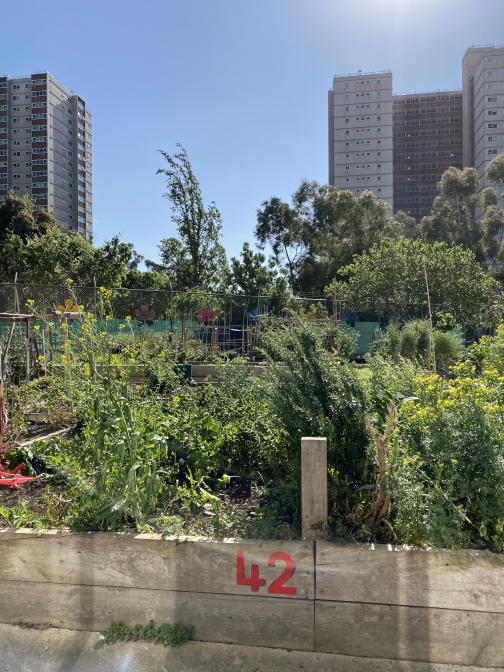Building Local Food Into Our Schools: Lessons From The USA
Dahlia ZailSchool kids across the United States rely on their school food as the majority of their sustenance for the day.
Of course, there is something to be said for kids being fed in this way. Unfortunately, the disturbing reality that some food is better than none must be faced daily by many families. Despite this, I want to take some time to explore what school lunches could look like, highlighting flaws in the system that have been exposed by COVID-19, and how we might remedy them.
COVID-19 impacts kids' school lunches in a very basic sense in the US. When kids aren't in school, kids aren't getting fed.
While school districts work hard to figure out a way to get food to these kids, for many it involves picking up the food, something parents are not always able to do for myriad reasons. It has become clear that the problem goes beyond just feeding children school lunch, but the urgent need to create food resilience in an entire community.
COVID-19 has allowed all of us to clearly see the fragility of the American food system. We see that in marginalised communities, nutritional food that was already scarce becomes scarcer. In these food deserts, the issues inherent in our industrialised food system come to light. When food is produced in mass quantities, far from where it is being distributed and consumed, the channels for this food to get to people are easily disrupted. We end up in situations with massively decreased food security in short periods of time, adversely impacting at-risk, low-income communities who already had high rates of food insecurity.

Cultivating Community Garden at Atherton Gardens Estate in Fitzroy, Melbourne. After School Kids Cooking Programs take place at the Fitzroy Community Food Centre adjacent.
There are many factors that influence the lack of nutritious food available in low income communities, some that are seemingly unrelated to our food system. But taking a look at how the food system functions in the United States, we see that there are some plausible and beneficial ways to remedy these issues.
For one, supporting local food chains. Food from local farms, even community gardens, can provide a more secure source of nutritional food to communities who otherwise are rendered in a food desert situation. There are greater ways to increase food resilience in a community and boost the local economy, just by supporting local food systems—whether that be local farms, restaurants, or the like.
It is also important that we touch on the subject of regenerative, local, seasonal food in school lunches. I in no way mean to degrade the efforts of the American school system to put warm food on the plates of many underserved children who rely on it for the majority of their food consumption. But what if we go a step further—what if we don't just accept that that is the best that we can do?
The accepted argument that it's impossible to source regenerative, organic and local food for a school district—that there just isn't enough of it, that it's too expensive—falls flat. The work of Conscious Kitchen, a non-profit that I interned at for years, shows that these claims, while sometimes valid, are solvable issues. Check out more of their work and program model here.
School lunch programs have massive buying power. They have real capacity to shift entire chains of food supply.
What people don't realise is that school lunch programs—not just universities but primary and secondary schools—have massive buying power. They have real capacity to shift entire chains of food supply. When schools source regenerative, organic and local food, this creates a shift in demand, and then a shift of supply by farms to fill this demand—something that ultimately results in more people farming better because there is a greater market for it.
For example, the Conscious Kitchen program in California shows that sourcing organically for school lunches in primary school can actually have a tangible impact on supply chains —and this is while working on only 2 schools! Sourcing from both organic distributors and directly from local, organic farmers, the Conscious Kitchen schools create a secure avenue for farmers to sell their produce, supporting them and their efforts to farm in a way that benefits our planet. Through connections with farmers, the organisation is able to source from them at a lower price, for higher quantities of food, ultimately benefiting both the students and the farmers.
Regenerative, organic and local agriculture is a step in the right direction. The lack of pesticide use has an obvious positive impact on both the health of the consumer and the farm worker. At an even deeper level, organic agriculture utilises farming techniques that are better for our planet. With more organic matter in the soil, soils can sequester more carbon, thereby helping to lessen the impacts of climate change. Check more out on the power of regenerative organic agriculture in the film Kiss the Ground, available on Netflix.
I must add, however, that creating a school lunch program that sources completely organically and locally is a challenge. It can result in higher prices, and when food is scratch cooked, labor costs also increase. For this reason, I think it is important to recognise small steps in creating school lunch systems that are more sustainable and healthier for the children. It is important to recognise the different steps that go into creating the school lunch programs we desire—it can be intimidating to attempt a complete change without taking easier, plausible steps. For example, being able to include fresh fruit, even if not organic, in a school lunch, is a worthwhile achievement.
Another important facet of creating a sustainable food lunch program is introducing a food literacy curriculum. As a whole, we are so completely disconnected from where our food comes from. Students may not be learning food literacy in their homes or in their communities, and for this reason schools have a responsibility to educate their students.
By teaching students about how food grows, how it is farmed, and the impact it can have on the environment, we are giving them an opportunity to connect with the natural world and the food system in a deep way.

3 year old squeezing a lemon to make guacamole at Cultivating Community's After School Kids Cooking.
Maybe next time they go to the grocery they will look at a pear as not just a pear that sits in a plastic container at the store. Instead they might see it as an entire tree, an entire life, that has value and importance and, in turn, view their place on the planet as something that is a part of an entire ecosystem.
We must be careful to approach this subject in a way that doesn’t shame children and families for their food choices. Many feeding their children in the best way they know how, or are able to. Additionally, we must include culturally appropriate knowledge in the food literacy curriculum that are relevant to student’s backgrounds. Food culture must play a significant part in whatever food education takes place. This is one of the best ways to engage students.
What we learn in school ultimately influences decisions we make throughout the rest of our lives. Giving students a thorough understanding of what goes into our food, and how to source the food that is best for both them and the planet, will enable them to be active agents for change as consumers or otherwise, creating a ripple effect towards a sustainable food system.
All in all, COVID-19 has presented to us, as an entire planet, an opportunity to reassess institutions that in the past seemed concrete. One of the institutions that needs to be re-evaluated is the industrialised food system, especially that in countries such as the US and Australia. One facet of this is considering the power that schools can hold in shifting an entire food system, as well as the impact it could have in terms of feeding children, and giving them valuable and necessary nutrition.
ABOUT THE AUTHOR
Dahlia Zail was intern at the Conscious Kitchen, an organisation based in the United States.
Conscious Kitchen is a scalable and economically-feasible model designed to feed our children healthy, delicious meals that will reduce preventable disease and build community at schools and beyond with kitchens as key hubs, while helping to accelerate the conversion of farmland toward producing a diversified, regenerative, climate friendly, organic supply chain.